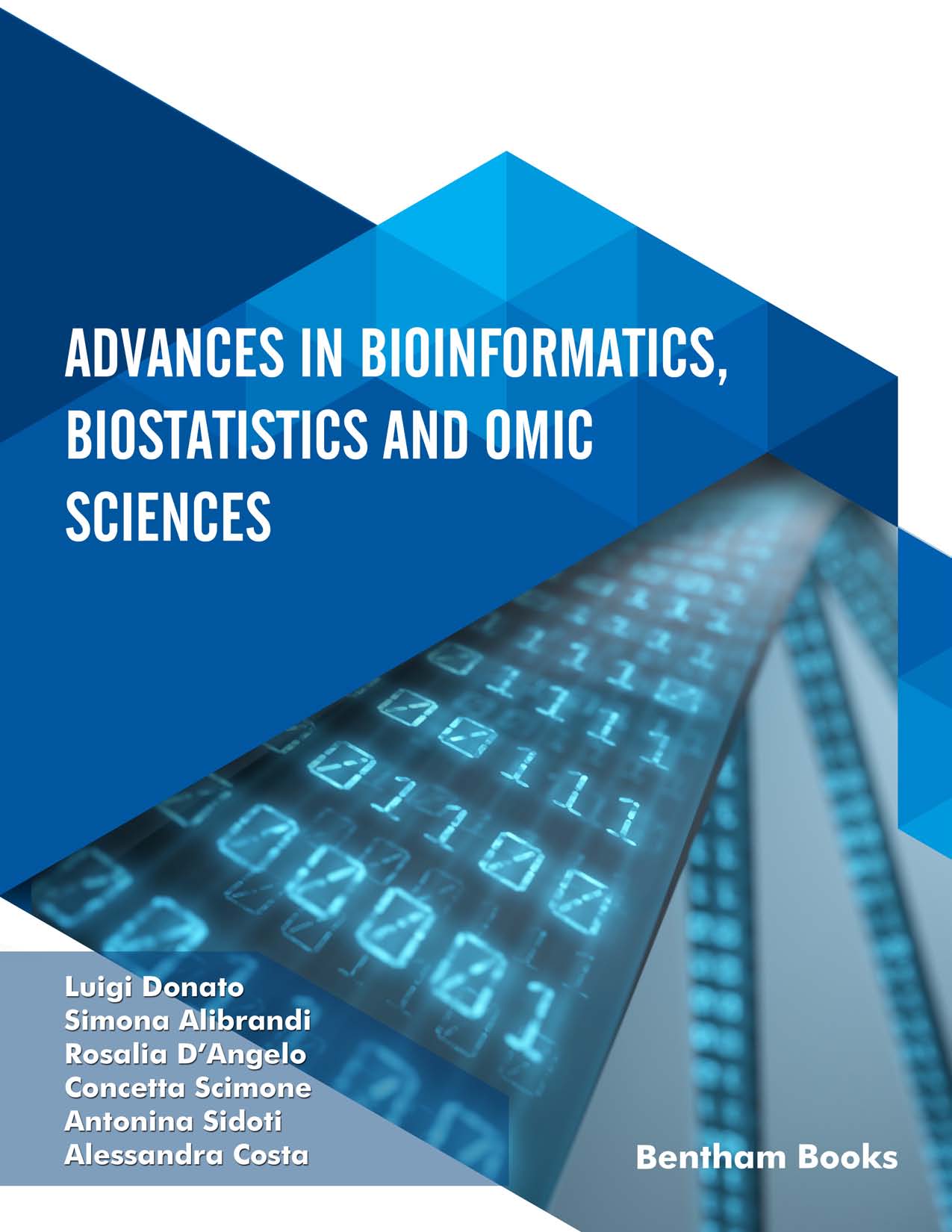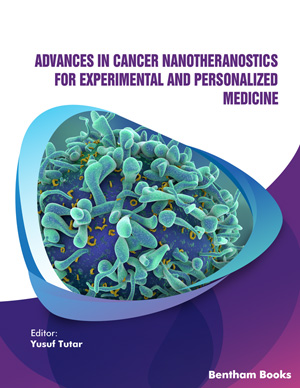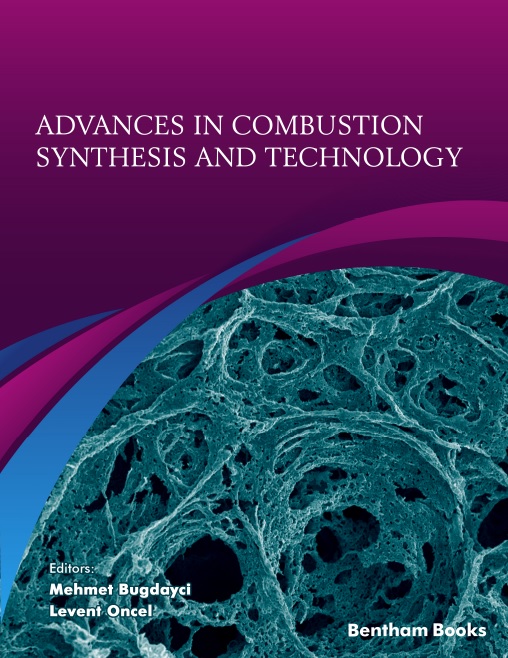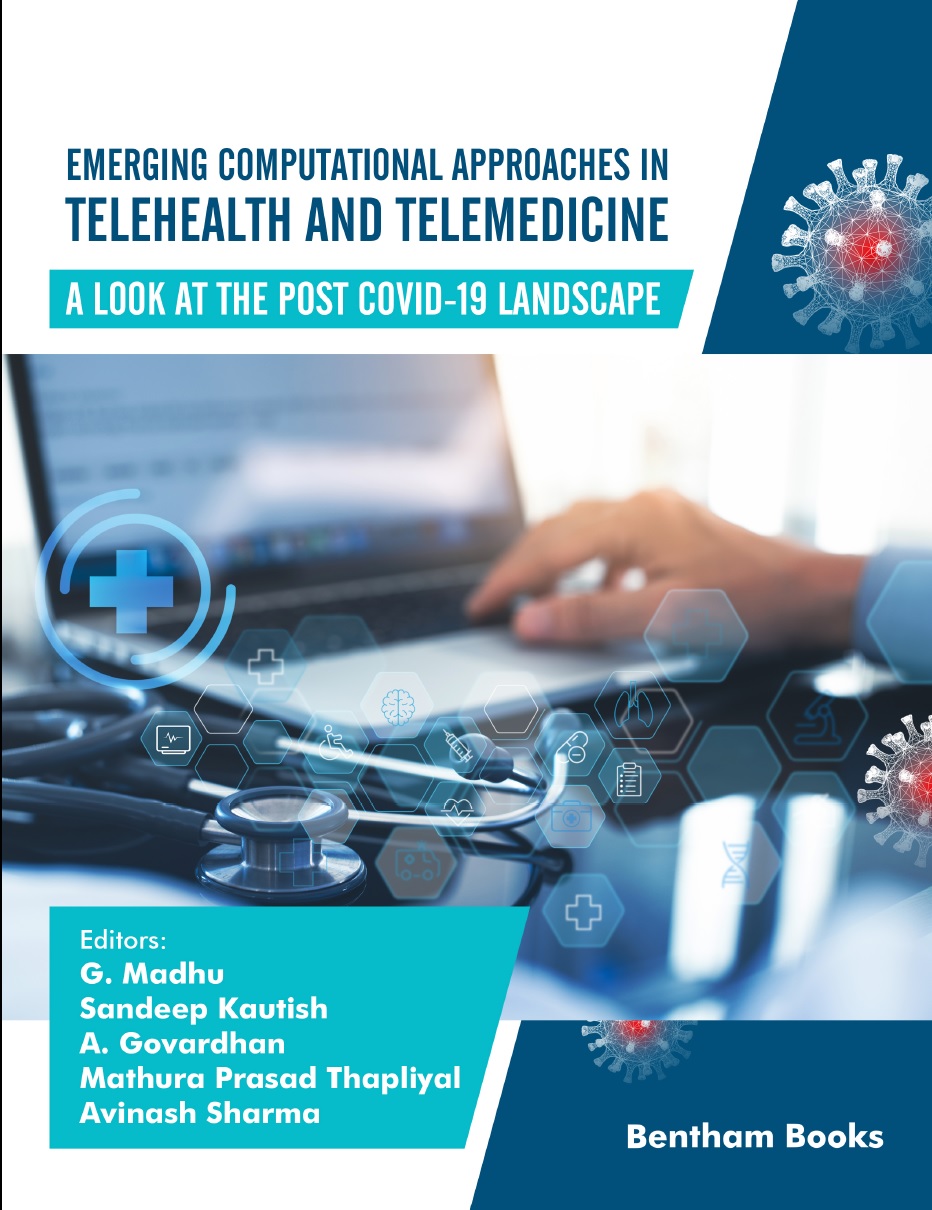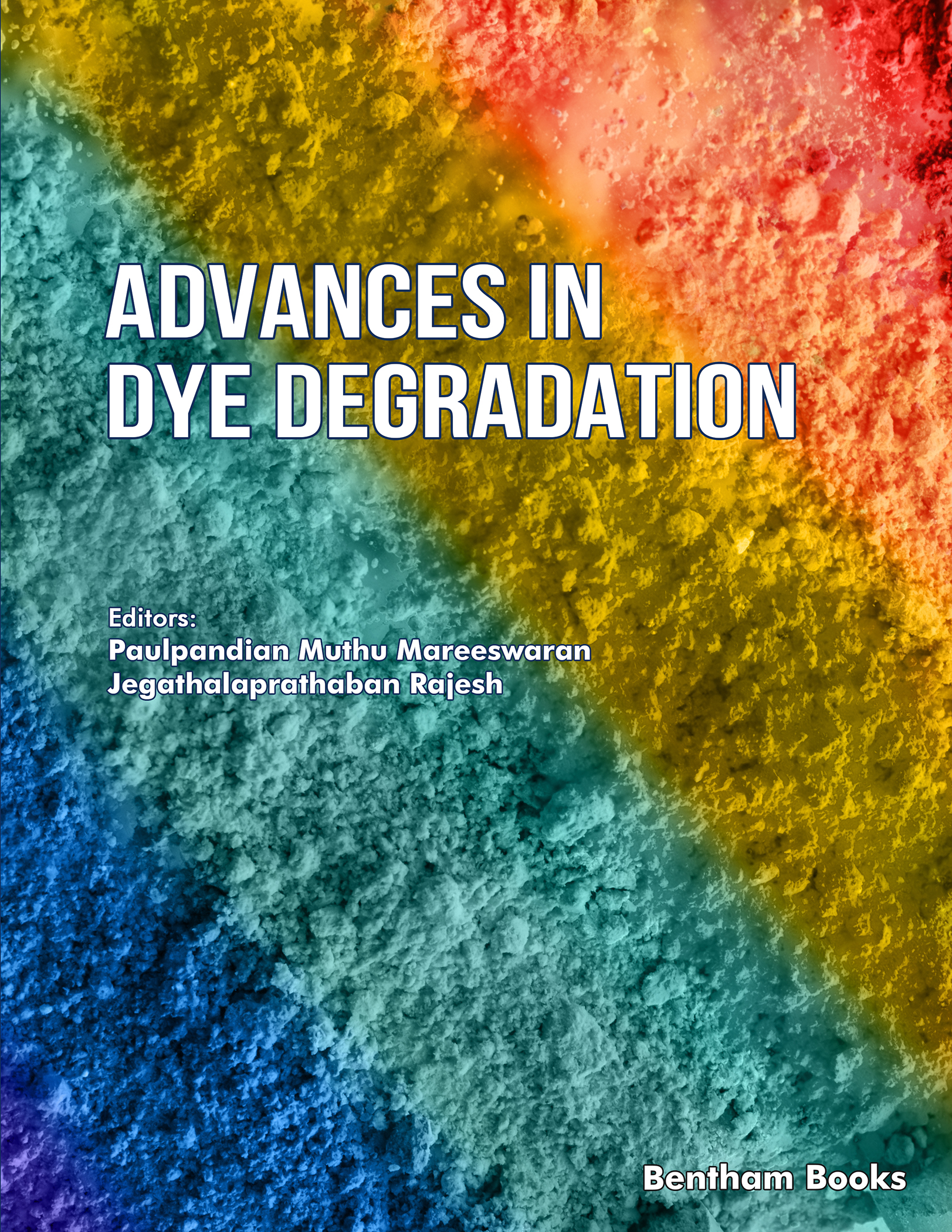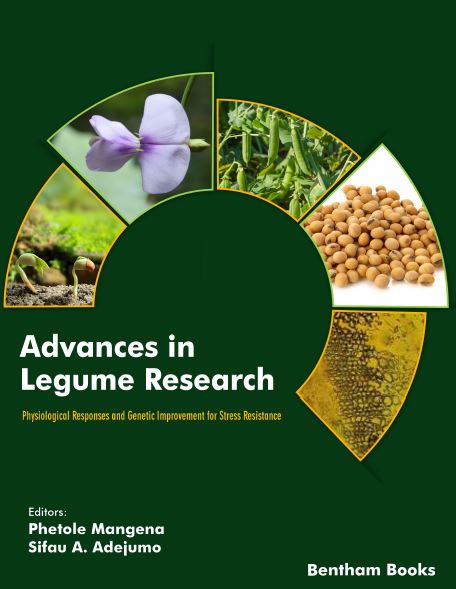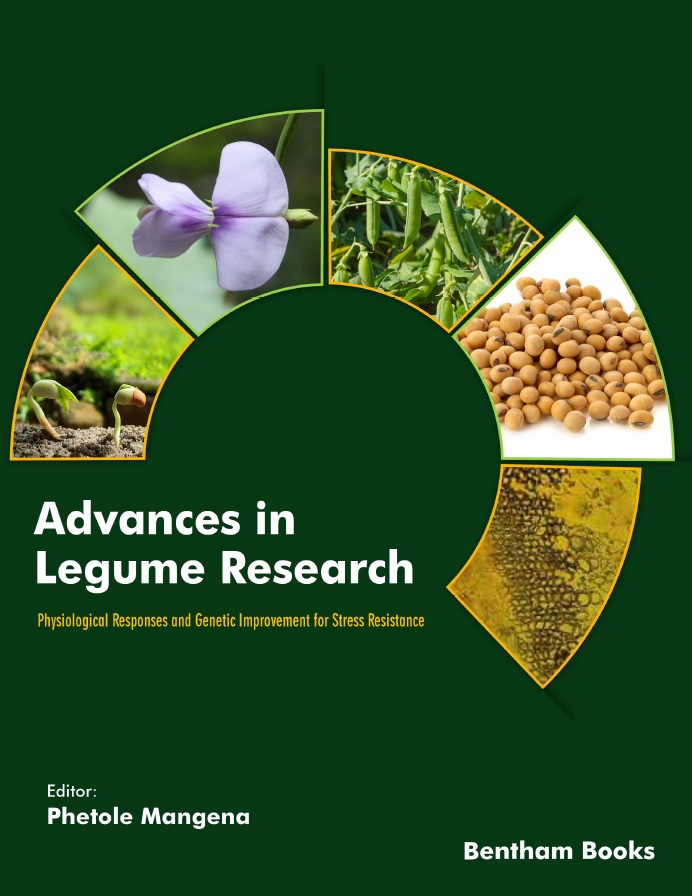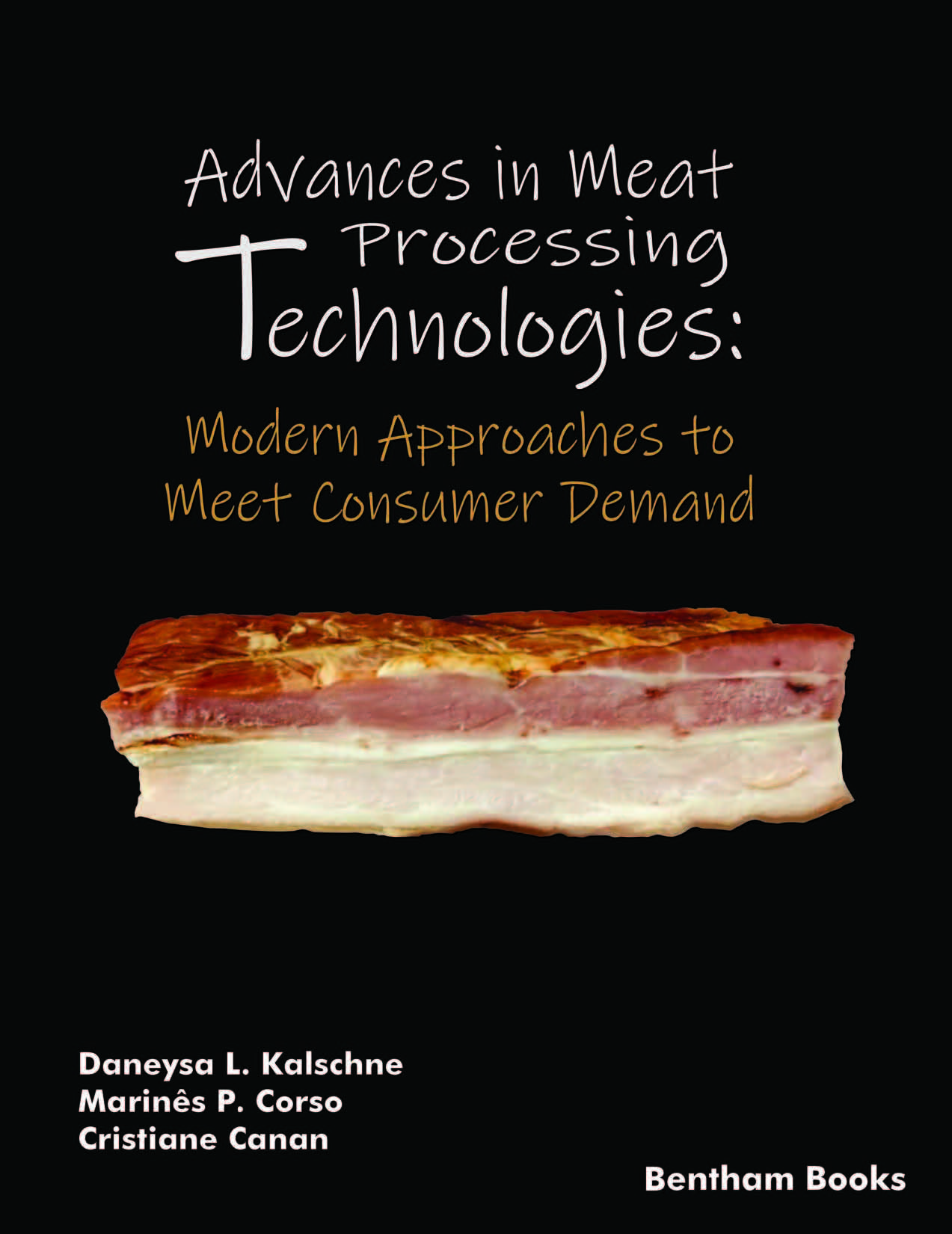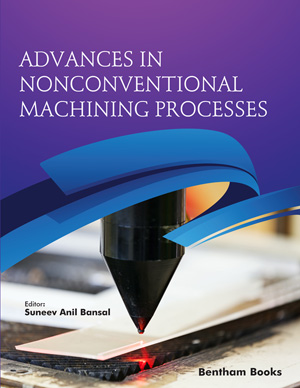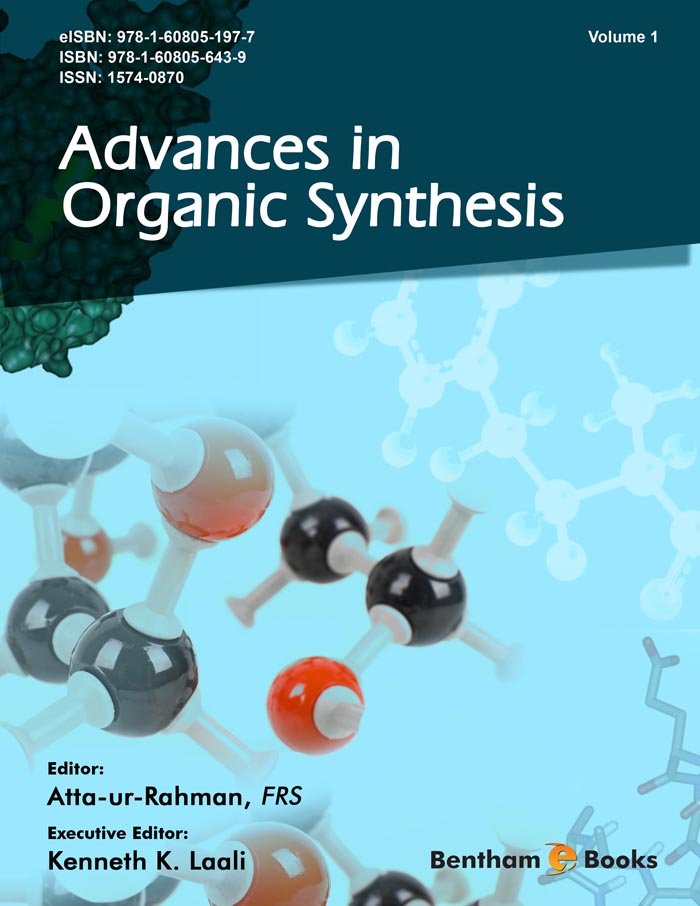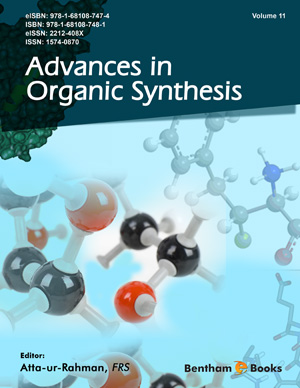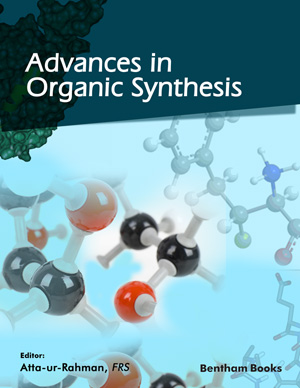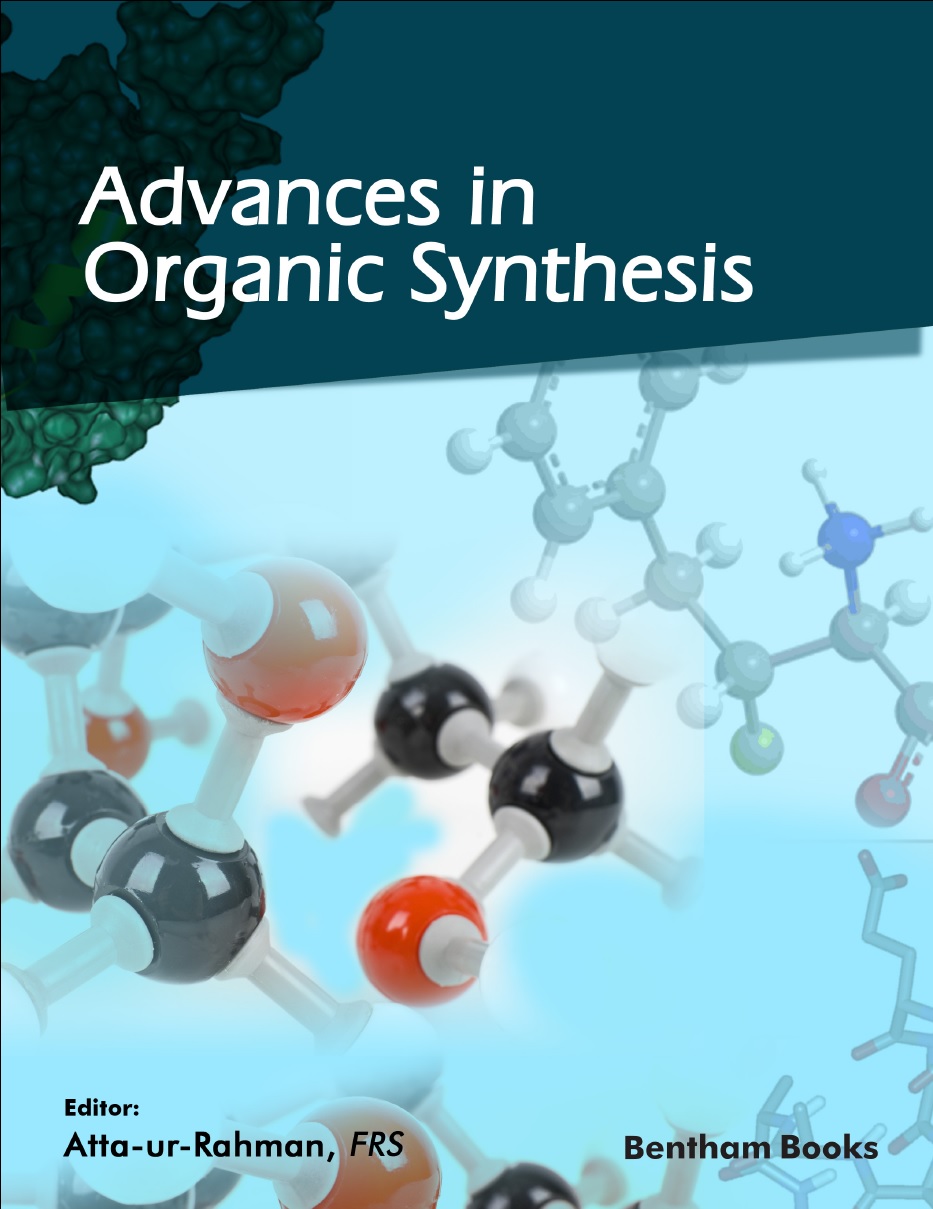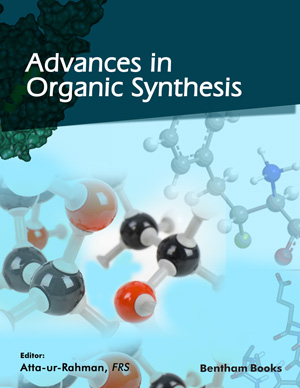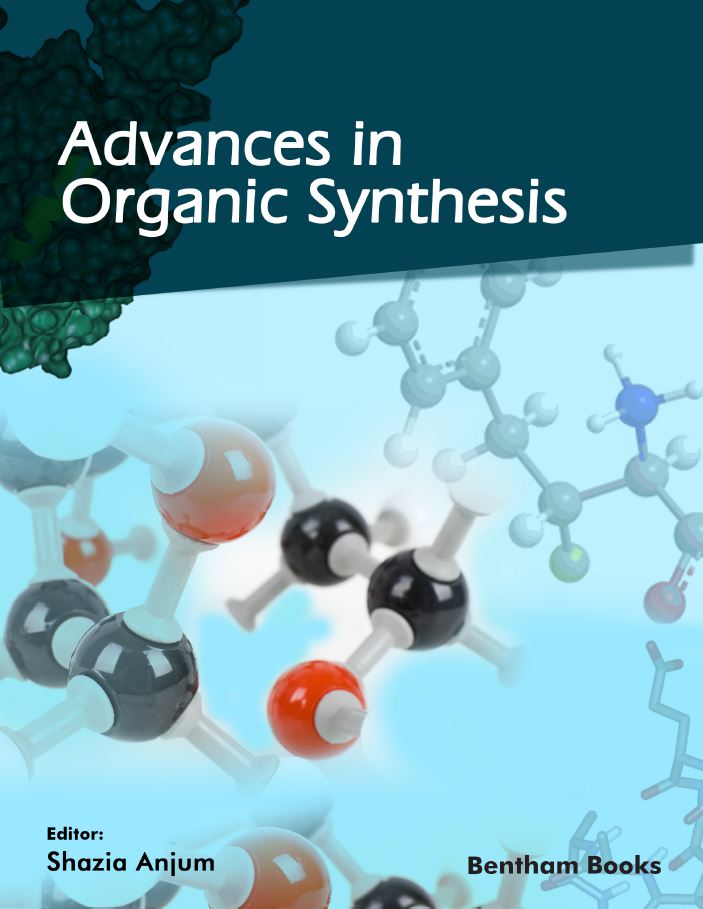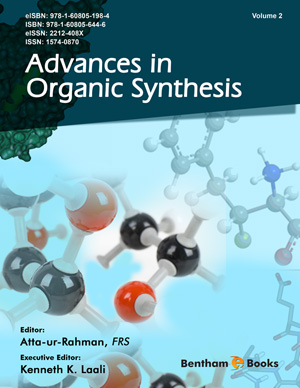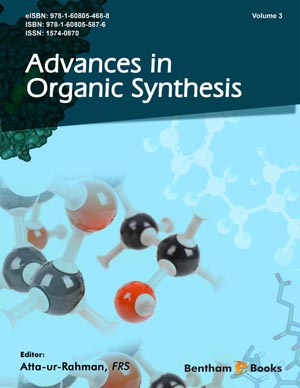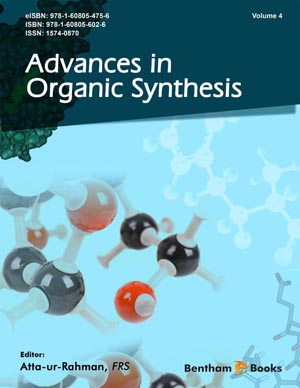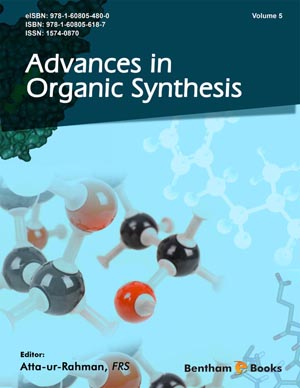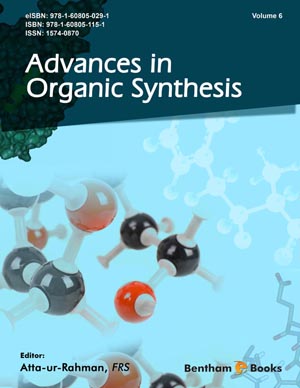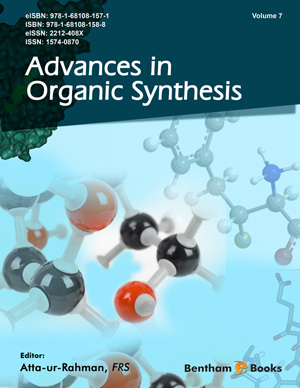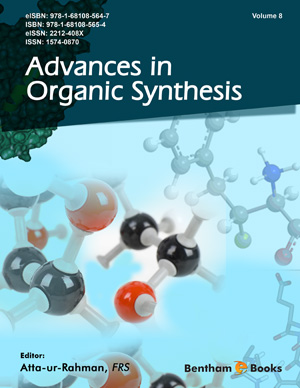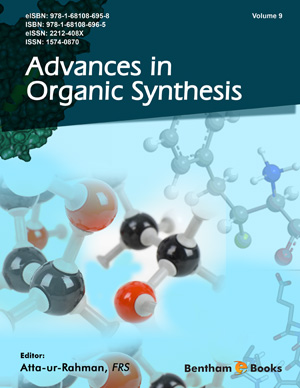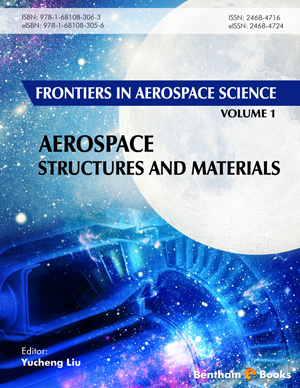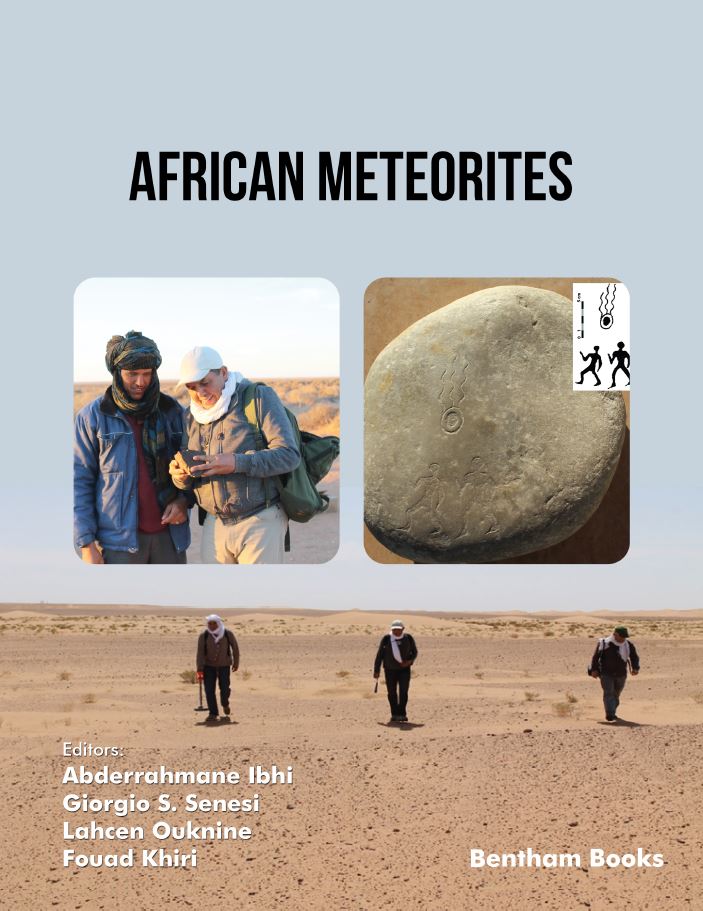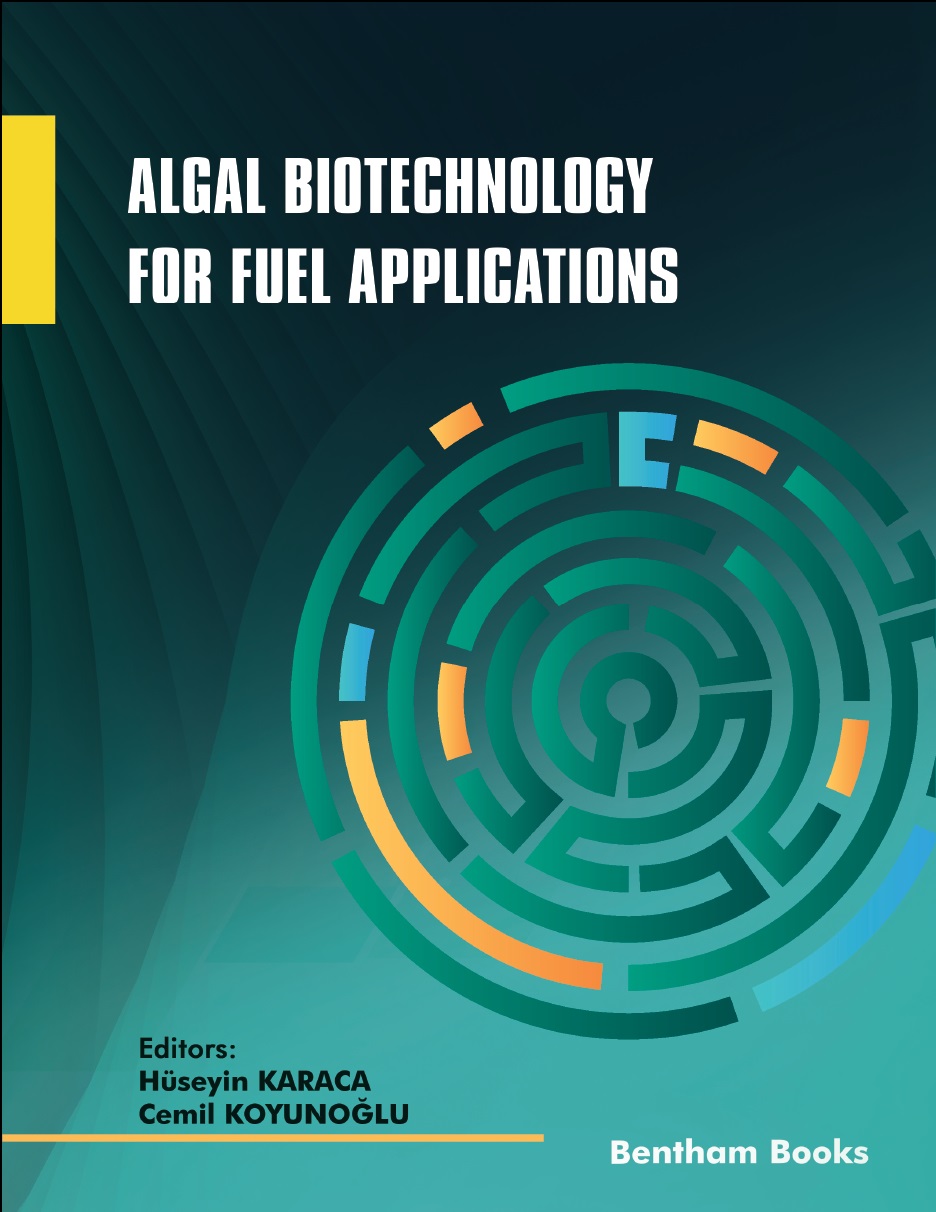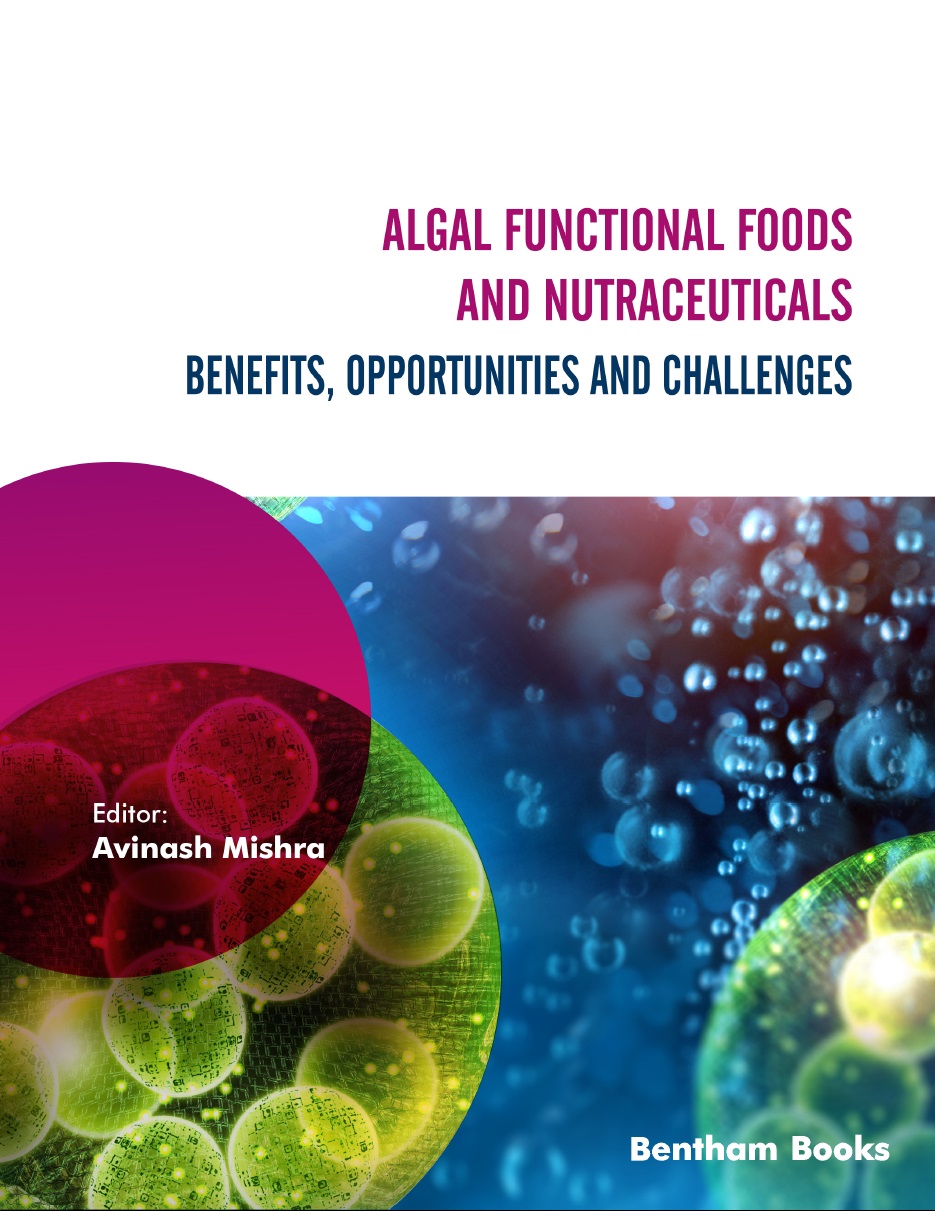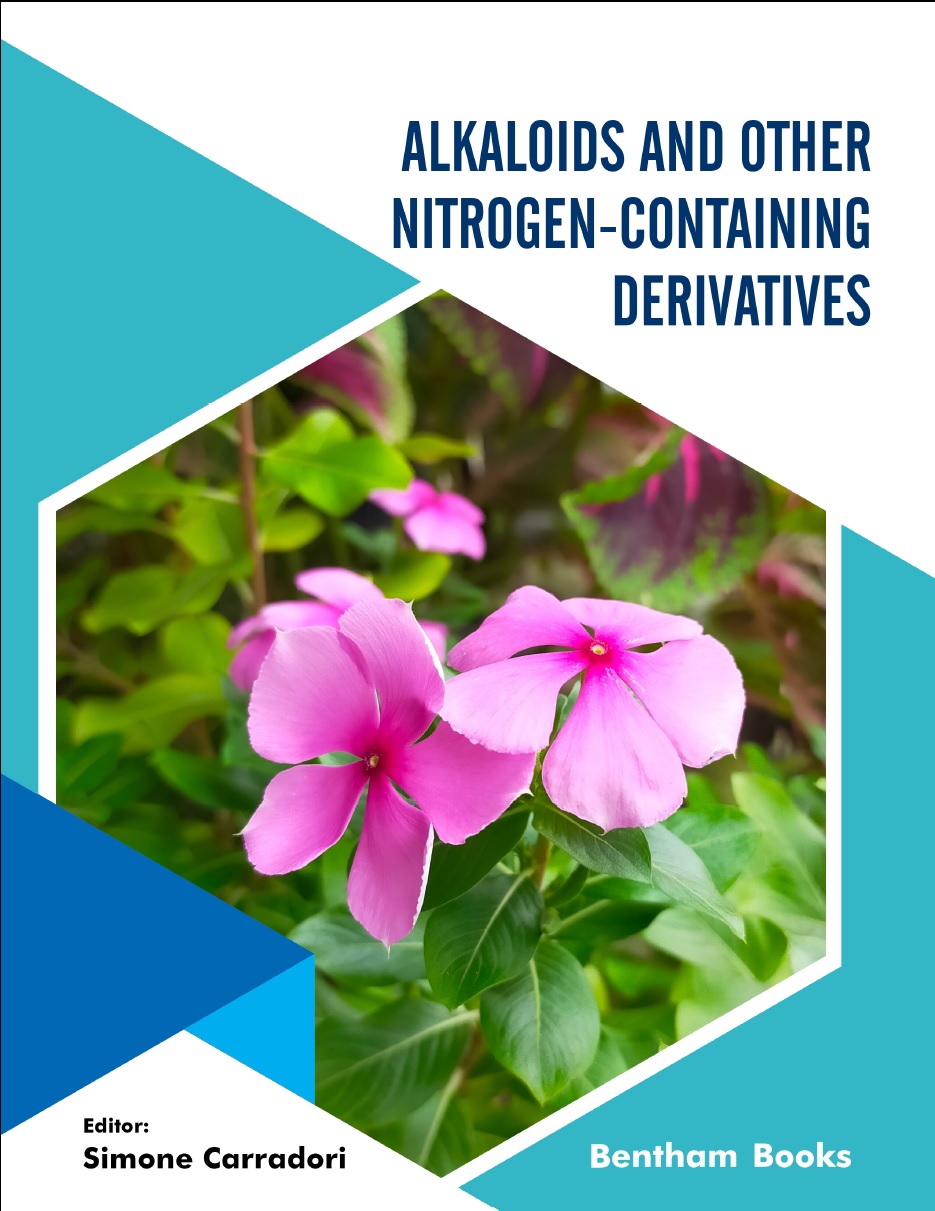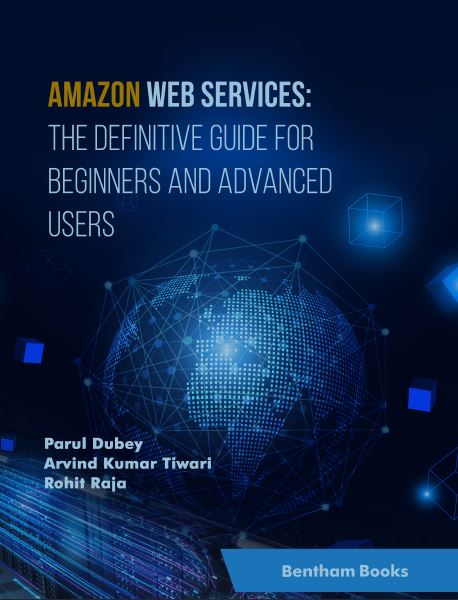- Home
- Publishers
- Bentham Science Publishers
Bentham Science Publishers
Bentham Science Publishers is a major publisher of more than 100 peer-reviewed science, technology and medical (STM) journals, along with a rapidly growing collection of eBooks. Since 1993, Bentham Science Publishers has been catering to the information needs of the pharmaceutical, engineering, biomedical and medical research community.1454
results
51 - 100 of 1454 results
-
-
Advances in Bioinformatics, Biostatistics and Omics Sciences
More LessBioinformatics, and by extension omic sciences the collective disciplines that are dependent on the use of extensive datasets of biological information present a challenge of data management for researchers all over the world. Big data collected as part of research projects and experiments can be complex, with several kinds of variables involved. Coupled with continuously changing bioinformatics and informatio Read More
-
-
-
Advances in Cancer Nanotheranostics for Experimental and Personalized Medicine
More LessNanotheranostics is a recent medical field which integrates diagnostic imaging protocols and therapeutic functions to monitor real time drug release in the body and distribution to the target site. The combined processes allow technicians to observe the effectiveness of a specifically designed drug candidate and predict its possible side effects. All these features help clinicians in optimizing treatment options for cancer Read More
-
-
-
Advances in Combustion Synthesis and Technology
More LessThis reference is an accessible update on combustion synthesis and the chemical technology for synthesizing composite materials. Nine chapters offer an overview of the subject with recent references, giving the reader an informed perspective.The book starts with an introduction to thermodynamic models used in combustion synthesis. Subsequent chapters explain the application of combustion synthesis to manufact Read More
-
-
-
Advances in Data Science-Driven Technologies
Emerging Computational Approaches in Telehealth and Telemedicine: A Look at The Post-COVID-19 Landscape: Volume 1
More LessThis book gives an overview of innovative approaches in telehealth and telemedicine. The Goal of the content is to inform readers about recent computer applications in e-health, including Internet of Things (IoT) and Internet of Medical Things (IoMT) technology. The 9 chapters will guide readers to determine the urgency to intervene in specific medical cases, and to assess risk to healthcare workers. The focus on teleheal Read More
-
-
-
Advances in Diagnostics and Immunotherapeutics for Neurodegenerative Diseases
More LessAdvances in Diagnostics and Immunotherapeutics for Neurodegenerative Diseases delves into the intricate mechanisms underlying neurodegenerative disorders and highlights cutting-edge diagnostic methods and innovative immunotherapeutic strategies. This comprehensive book addresses several key themes crucial to understanding and combating these debilitating conditions with an updated understanding Read More
-
-
-
Advances in Dye Degradation: Volume 2
More LessThis series provides information on the nature of dyes, their harmful effects, and dye degrading techniques. The second volume focuses on sophisticated oxidation methods for dye degradation. The information on target-oriented dye mitigation is intended to give readers a better understanding of the dye degradation process to sustain a healthy environment. Chapters present referenced information and highlight Read More
-
-
-
Advances in Face Image Analysis: Theory and Applications
More LessAdvances in Face Image Analysis: Theory and applications describes several approaches to facial image analysis and recognition. Eleven chapters cover advances in computer vision and pattern recognition methods used to analyze facial data. The topics addressed in this book include automatic face detection, 3D face model fitting, robust face recognition, facial expression recognition, face image data embedding, mo Read More
-
-
-
Advances in HIV Treatment: HIV Enzyme Inhibitors and Antiretroviral Therapy
Frontiers in HIV Research: Volume 1
More LessAdvances in HIV Treatment: HIV Enzyme Inhibitors and Antiretroviral Therapy presents comprehensive and updated information on drug therapies used to treat and manage HIV infection in human patients. The volume is organized in to chapters detailing respective classes of HIV Drugs including HIV entry inhibitors, reverse transcriptase inhibitors (RTIs), integrase strand inhibitors (INSTIs), and protease inhibitors (PIs). Ea Read More
-
-
-
Advances in Legume Research: Physiological Responses and Genetic Improvement for Biotic Stress Resistance: Volume 2
More LessThis reference provides comprehensive insights on the harm inflicted by pests and diseases on leguminous crops. Internationally acclaimed authors provide succinct reviews on breeding and impact of biotic stress factors such as insect pests, microbial pathogens, spiders, and vertebrate pests in legumes like soybean, cowpea, and common bean. The book also contains detailed technical analysis of methods such as the PCR-based Read More
-
-
-
Advances in Legume Research: Physiological Responses and Genetic Improvement for Stress Resistance
More LessFor centuries, legumes have been used as pulses or grains serving as the most critical sources of major protein/oil-producing crops for both human and animal consumption, and for providing raw materials for industrial processing. They are highly valued as soil-building crops, improving soil quality through their beneficial involvement in biological nitrogen fixation, a symbiotic partnership with rhizobia. Advances in Legume Re Read More
-
-
-
Advances in Manufacturing Technologies and Production Engineering
More LessThis reference presents a collection of studies which highlight new developments in improving manufacturing processes and performance. The book includes 11 chapters which cover unique topics of interest to production engineers. These topics include the production of advanced composite materials and alloys to the use of sensors to evaluate production processes, product testing and evaluation (in production an Read More
-
-
-
Advances in Meat Processing Technologies: Modern Approaches to Meet Consumer Demand
More LessMeat and meat-based products play an important role as foods in the diets of people around the world. However, environmental and social issues have posed a challenge to meat production processing plants, with the advent of more consumer conscious production values across the food processing industry and a changing attitude among some communities towards the consumption of products from animal origin. The de Read More
-
-
-
Advances in Modern Medicine
More LessAdvances in Modern Medicine introduces recent advanced medical practices performed at the Kure Medical Center and Chugoku Cancer Center (KMCCCC) - one of the leading hospitals in Japan - to those working in the field of medicine throughout the world, including physicians, surgeons, pharmacists, psychologists, medical engineers, medical technologists, nurses, and students. Readers will be updated on the general tren Read More
-
-
-
Advances in Multiphase Flow and Heat Transfer: Volume 1
More LessMultiphase flow and heat transfer have found a wide range of applications in several engineering and science fields such as mechanical engineering, chemical and petrochemical engineering, nuclear engineering, energy engineering, material engineering, ocean engineering, mineral engineering, electronics and micro-electronics engineering, information technology, space technology, micro- and nano-technologies, bi Read More
-
-
-
Advances in Multiphase Flow and Heat Transfer: Volume 2
More LessMultiphase flow and heat transfer have found a wide range of applications in several engineering and science fields such as mechanical engineering, chemical and petrochemical engineering, nuclear engineering, energy engineering, material engineering, ocean engineering, mineral engineering, electronics and micro-electronics engineering, information technology, space technology, micro- and nano-technologies, bi Read More
-
-
-
Advances in Multiphase Flow and Heat Transfer: Volume 3
More LessMultiphase flow and heat transfer have found a wide range of applications in several engineering and science fields such as mechanical engineering, chemical and petrochemical engineering, nuclear engineering, energy engineering, material engineering, ocean engineering, mineral engineering, electronics and micro-electronics engineering, information technology, space technology, micro- and nano-technologies, bi Read More
-
-
-
Advances in Multiphase Flow and Heat Transfer: Volume 4
More LessMultiphase flow and heat transfer have found a wide range of applications in several engineering and science fields such as mechanical engineering, chemical and petrochemical engineering, nuclear engineering, energy engineering, material engineering, ocean engineering, mineral engineering, electronics and micro-electronics engineering, information technology, space technology, micro- and nano-technologies, bi Read More
-
-
-
Advances in Nonconventional Machining Processes
More LessIn the modern era of manufacturing, unconventional machining methods are quite popular due to various advantages such as high accuracy, excellent surface finish, less tool wear, much quieter operations, among others. Moreover, new age and novel materials are sometimes hard to machine with traditional machining processes due to their high strength and brittleness. Advances in Nonconventional Machining Proces Read More
-
-
-
Advances in Organic Synthesis: Volume 1
More LessAdvances in Organic Synthesis is a book series devoted to the latest advances in synthetic approaches towards challenging structures. It presents comprehensive articles written by eminent authorities on different synthetic approaches to selected target molecules and new methods developed to achieve specific synthetic transformations. Contributions are written by eminent scientists and each volume is edited by an authority i Read More
-
-
-
Advances in Organic Synthesis: Volume 10
More LessAdvances in Organic Synthesis is a book series devoted to the latest advances in synthetic approaches towards challenging structures. The series presents comprehensive reviews written by eminent authorities on different synthetic approaches to selected target molecules and new methods developed to achieve specific synthetic transformations or optimal product yields. Advances in Organic Synthesis is essential for all orga Read More
-
-
-
Advances in Organic Synthesis: Volume 11
More LessAdvances in Organic Synthesis is a book series devoted to the latest advances in synthetic approaches towards challenging structures. The series presents comprehensive reviews written by eminent authorities on different synthetic approaches to selected target molecules and new methods developed to achieve specific synthetic transformations or optimal product yields. Advances in Organic Synthesis is essential for all orga Read More
-
-
-
Advances in Organic Synthesis: Volume 12
More LessAdvances in Organic Synthesis is a book series devoted to the latest advances in synthetic approaches towards challenging structures. The series presents comprehensive reviews written by eminent authorities on different synthetic approaches to selected target molecules and new methods developed to achieve specific synthetic transformations or optimal product yields. Advances in Organic Synthesis is essential for all orga Read More
-
-
-
Advances in Organic Synthesis: Volume 13
More LessAdvances in Organic Synthesis is a book series devoted to the latest advances in synthetic approaches towards challenging structures. The series presents comprehensive reviews written by eminent authorities on different synthetic approaches to selected target molecules and new methods developed to achieve specific synthetic transformations or optimal product yields. Advances in Organic Synthesis is essential for all orga Read More
-
-
-
Advances in Organic Synthesis: Volume 14
More LessAdvances in Organic Synthesis is a book series devoted to the latest advances in synthetic approaches towards challenging structures. The series presents comprehensive reviews written by eminent authorities on different synthetic approaches to selected target molecules and new methods developed to achieve specific synthetic transformations or optimal product yields. Advances in Organic Synthesis is essential for all orga Read More
-
-
-
Advances in Organic Synthesis: Volume 15
More LessAdvances in Organic Synthesis is a book series devoted to the latest advances in synthetic approaches towards challenging structures. The series presents comprehensive reviews written by eminent authorities on different synthetic approaches to selected target molecules and new methods developed to achieve specific synthetic transformations or optimal product yields. Advances in Organic Synthesis is essential for all orga Read More
-
-
-
Advances in Organic Synthesis: Volume 16
More LessAdvances in Organic Synthesis is a book series devoted to the latest advances in synthetic approaches towards challenging structures. The series presents comprehensive reviews written by eminent authorities on different synthetic approaches to selected target molecules and new methods developed to achieve specific synthetic transformations or optimal product yields. Advances in Organic Synthesis is essential for all orga Read More
-
-
-
Advances in Organic Synthesis: Volume 17
More LessAdvances in Organic Synthesis is a book series devoted to the latest advances in synthetic approaches towards challenging structures. The series presents comprehensive reviews written by eminent authorities on different synthetic approaches to selected target molecules and new methods developed to achieve specific synthetic transformations or optimal product yields. Advances in Organic Synthesis is essential for all orga Read More
-
-
-
Advances in Organic Synthesis: Volume 18
More LessAdvances in Organic Synthesis is a book series devoted to the latest advances in synthetic approaches towards challenging structures. The series presents comprehensive reviews written by eminent authorities on different synthetic approaches to selected target molecules and new methods developed to achieve specific synthetic transformations or optimal product yields. Advances in Organic Synthesis is essential for all orga Read More
-
-
-
Advances in Organic Synthesis: Volume 2
Modern Organofluorine Chemistry-Synthetic Aspects
More LessThe volume focuses on recent advances in organofluorine chemistry directed towards selective fluorine introduction into various target molecules, employing both traditional and contemporary, electrophilic and nucleophilic, fluorinating agents. It brings together sixteen chapters written by leading experts and active researchers in the field. It is an excellent source of information for synthetic chemists interested in selective f Read More
-
-
-
Advances in Organic Synthesis: Volume 3
More LessAdvances in Organic Synthesis is a book series devoted to the latest advances in synthetic approaches towards challenging structures. It presents comprehensive articles written by eminent authorities on different synthetic approaches to selected target molecules and new methods developed to achieve specific synthetic transformations. Contributions are written by eminent scientists and each volume is edited by an authority i Read More
-
-
-
Advances in Organic Synthesis: Volume 4
More LessAdvances in Organic Synthesis is a book series devoted to the latest advances in synthetic approaches towards challenging structures. It presents comprehensive articles written by eminent authorities on different synthetic approaches to selected target molecules and new methods developed to achieve specific synthetic transformations. Contributions are written by eminent scientists and each volume is edited by an authority i Read More
-
-
-
Advances in Organic Synthesis: Volume 5
More LessAdvances in Organic Synthesis is a book series devoted to the latest advances in synthetic approaches towards challenging structures. It presents comprehensive articles written by eminent authorities on different synthetic approaches to selected target molecules and new methods developed to achieve specific synthetic transformations. Contributions are written by eminent scientists and each volume is edited by an authority i Read More
-
-
-
Advances in Organic Synthesis: Volume 6
More LessAdvances in Organic Synthesis is a book series devoted to the latest advances in synthetic approaches towards challenging structures. It presents comprehensive articles written by eminent authorities on different synthetic approaches to selected target molecules and new methods developed to achieve specific synthetic transformations. Contributions are written by eminent scientists and each volume is edited by an authority i Read More
-
-
-
Advances in Organic Synthesis: Volume 7
More LessAdvances in Organic Synthesis is a book series devoted to the latest advances in synthetic approaches towards challenging structures. It presents comprehensive articles written by eminent authorities on different synthetic approaches to selected target molecules and new methods developed to achieve specific synthetic transformations. Contributions are written by eminent scientists and each volume is edited by an authority i Read More
-
-
-
Advances in Organic Synthesis: Volume 8
More LessAdvances in Organic Synthesis is a book series devoted to the latest advances in synthetic approaches towards challenging structures. It presents comprehensive articles written by eminent authorities on different synthetic approaches to selected target molecules and new methods developed to achieve specific synthetic transformations. Contributions are written by eminent scientists and each volume is edited by an authority i Read More
-
-
-
Advances in Organic Synthesis: Volume 9
More LessAdvances in Organic Synthesis is a book series devoted to the latest advances in synthetic approaches towards challenging structures. The series presents comprehensive reviews written by eminent authorities on different synthetic approaches to selected target molecules and new methods developed to achieve specific synthetic transformations or optimal product yields. Advances in Organic Synthesis is essential for all orga Read More
-
-
-
Advances in Special Functions of Fractional Calculus: Special Functions in Fractional Calculus and Their Applications in Engineering
More LessIn recent years, special functions have been developed and applied in a variety of fields, such as combinatory, astronomy, applied mathematics, physics, and engineering due to their remarkable properties. This volume expands our understanding of special functions by highlighting recent trends in numerical analysis. are demonstrated by 15 chapters. Many chapters highlight the importance of fundamental results and tech Read More
-
-
-
Advances in Time Series Forecasting: Volume 1
More LessTime series analysis is applicable in a variety of disciplines, such as business administration, economics, public finance, engineering, statistics, econometrics, mathematics and actuarial sciences. Forecasting the future assists in critical organizational planning activities. Time series analysis is employed by many different organizations such as hospitals, universities, commercial enterprises or government organizations in order Read More
-
-
-
Advances in the Development of Cool Materials for the Built Environment
More LessThis e-book is a suitable reference on the technical and scientific competence related to effective application and integration of cool materials in the built environment. The e-book is an overview on the following:• The role of cool materials in the built environment.• Major cool materials techniques and their benefits and drawbacks.• Research trends in cool materials for the built environment.• Technical guidelines for inst Read More
-
-
-
Aerospace Structures and Materials
Frontiers in Aerospace Science: Volume 1
More LessThis comprehensive volume presents a wide spectrum of information about the design, analysis and manufacturing of aerospace structures and materials. Readers will find an interesting compilation of reviews covering several topics such as structural dynamics and impact simulation, acoustic and vibration testing and analysis, fatigue analysis and life optimization, reversing design methodology, non-destructive evaluat Read More
-
-
-
African Meteorites
More LessAfrican Meteorites is a comprehensive exploration of meteorite falls and finds across the arid and hot regions of the African continent, offering profound insights into a significant collection of meteorites, second only to Antarctica. The book is divided into seven chapters, covering the origin and formation of meteorites, statistical analyses of meteorite falls in African countries, classes and mass distribution of meteorite finds, Read More
-
-
-
Agent-Based Computational Economics Using NetLogo
More LessAgent-based Computational Economics using NetLogo explores how researchers can create, use and implement multi-agent computational models in Economics by using NetLogo software platform. Problems of economic science can be solved using multi-agent modelling (MAM). This technique uses a computer model to simulate the actions and interactions of autonomous entities in a network, in order to analyze the effects on t Read More
-
-
-
Agricultural Benefits of Postharvest Banana Plants
More LessBanana farming is the basis for commercial fruit trading. Every banana plant generates waste biomass nearly ten times the quantity of its fruits. Disposal of waste biomass is a burden for the farmers. Economical use of the waste biomass can bring financial benefit to banana farmers. Use of organic potash in lieu of inorganic potash affords higher yield and also helps to preserve the ecosphere of soil for subsequent crops. Agri Read More
-
-
-
Agricultural and Food Biotechnologies of Olea europaea and Stone Fruits
More LessThe reference presents detailed research on the olive (Olea europaea) and the stone fruit. Readers will learn about the biotechnology, plant nutrition, plant breeding, pomology, postharvest physiology, plant pathology of these two plant species. In a practical sense, the book also presents applicable agricultural knowledge about these plants for crop improvement, production, nutrients, pest management, disease, genetic, Read More
-
-
-
Algal Biotechnology for Fuel Applications
Recent Advances in Biotechnology: Volume 6
More LessIntensive use of fossil-based energy sources causes significant environmental problems on a global scale. Researchers have been working for several decades to find alternative energy solutions to fossil fuels. Algae are a renewable energy source, with high potential for increasing scarce resources and reducing environmental problems caused by fossil fuel use. Algal Biotechnology for Fuel Applications gives the reader a c Read More
-
-
-
Algal Functional Foods and Nutraceuticals: Benefits, Opportunities, and Challenges
More LessEdible algae, including seaweeds, are a source of functional food, dietary supplements, metabolites and bioactive compounds. Algal-based functional foods have potential health benefits, and their commercial value depends on their applications in the food and nutraceutical industries. This book covers several aspects of algal based functional foods. It informs the reader about algal cultivation techniques, environmental Read More
-
-
-
Alkaloids and Other Nitrogen-Containing Derivatives
Medicinal Chemistry Lessons From Nature: Volume 3
More LessMedicinal chemists around the world have been inspired by nature and have successfully extracted chemicals from plants. Research on enzymatic modifications of naturally occurring compounds has played a critical role in the search for biologically active molecules to treat diseases.This book set explores compounds of interest to researchers and clinicians. It presents a comprehensive analysis about the medicinal chemistry (d Read More
-
-
-
Alternative Remedies and Natural Products for Cancer Therapy: An Integrative Approach
More LessThis book provides a holistic view of natural products and remedies that have been used to treat cancer. The editors aim to educate readers about the importance of the translational role of natural products in cancer treatment by compiling 14 chapters. The book emphasizes an integrative approach to the topic by blending traditional knowledge that supports alternative therapies with the science of phytochemicals and drug Read More
-
-
-
Amazon Web Services: The Definitive Guide for Beginners and Advanced Users
More LessAmazon Web Services: A Comprehensive Guide for Beginners and Advanced Users is your go-to companion for learning and mastering AWS. It presents 10 easy-to-read chapters that build a foundation for cloud computing while also equipping readers with the skills necessary to use AWS for commercial projects. Readers will learn how to use AWS cloud computing services for seamless integrations, effective monitoring, and o Read More
-
-
-
Amelogenins: Multifaceted Proteins for Dental and Bone Formation and Repair
Frontiers between Science and Clinic in Odontology: Volume 1
More LessThis volume is the 1st in a series of Ebooks that bridges the gap between advances in science and clinical practice in odontology. Recent advances in biology, materials science and tissue engineering are increasingly viewed as being of enormous clinical potential. Stem cell research has opened up the possibility of reconstructing teeth from the association of epithelial and mesanchymal embryonic or adult cells, as an exciting alte Read More
-

